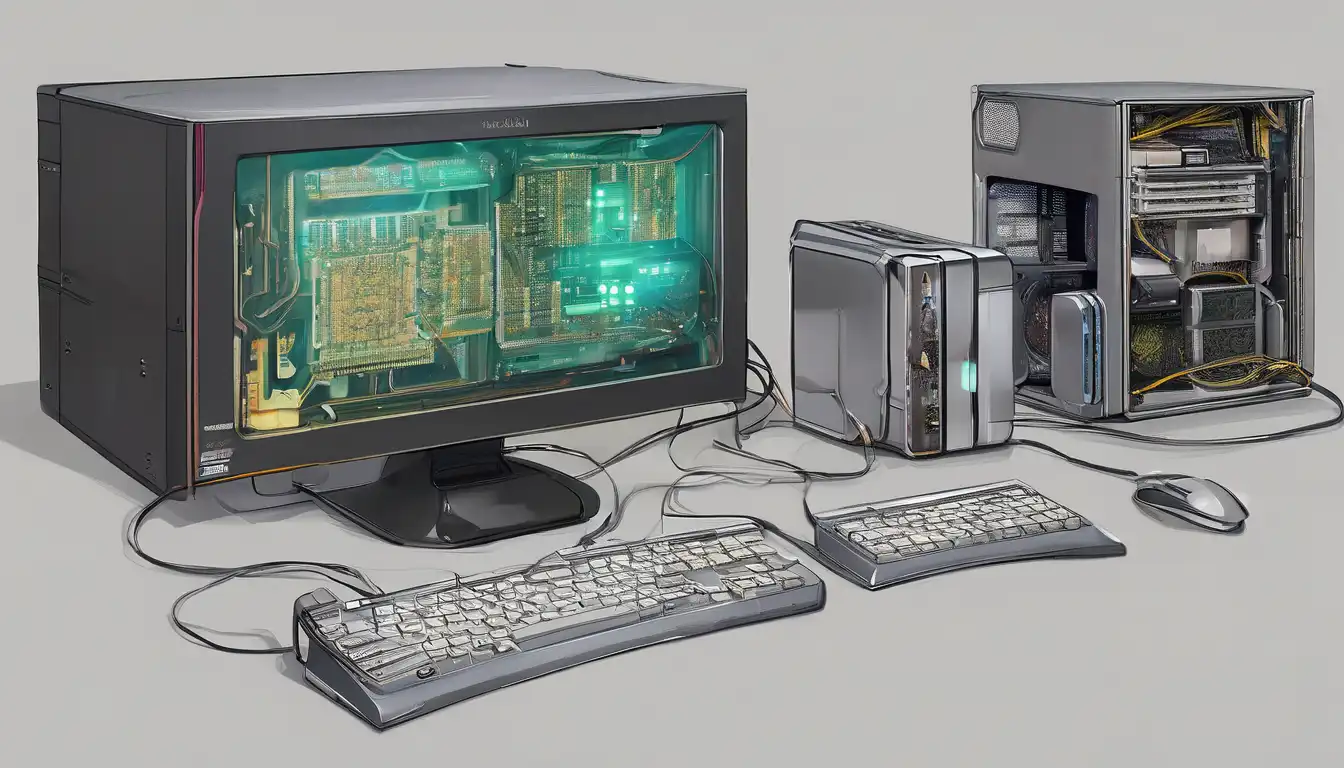Revolutionary Advances in Computer Hardware Technology
The landscape of computer hardware technology is undergoing unprecedented transformation, with innovations emerging at an accelerated pace. From quantum computing breakthroughs to AI-optimized processors, the latest developments are reshaping how we interact with technology. These advancements promise to deliver unprecedented performance, efficiency, and capabilities that were once confined to science fiction.
Next-Generation Processor Architectures
Processor technology has taken quantum leaps forward with the introduction of 3D stacking and chiplet designs. Major manufacturers like Intel, AMD, and Apple are pushing the boundaries of what's possible with silicon. The latest processors feature advanced node processes down to 3nm and beyond, delivering significant improvements in both performance and energy efficiency. These innovations enable faster data processing while reducing power consumption, making them ideal for everything from mobile devices to data centers.
One of the most exciting developments is the integration of AI acceleration directly into CPU architectures. Modern processors now include dedicated neural processing units (NPUs) that handle machine learning tasks with remarkable efficiency. This hardware-level AI integration allows for real-time language processing, image recognition, and predictive analytics without taxing the main processor cores.
Revolutionary Memory Technologies
The memory sector has seen groundbreaking innovations with DDR5 RAM becoming mainstream and DDR6 already in development. These new memory standards offer significantly higher bandwidth and lower power consumption compared to previous generations. For high-performance computing applications, technologies like HBM (High Bandwidth Memory) are providing unprecedented data transfer rates essential for AI training and scientific computing.
Non-volatile memory technologies are also evolving rapidly. 3D XPoint and other persistent memory solutions are blurring the lines between traditional RAM and storage, enabling systems to maintain data even during power outages while offering near-RAM speeds. This technology is particularly transformative for database applications and real-time analytics systems.
Storage Solutions Redefined
Storage technology continues its remarkable evolution with PCIe 5.0 SSDs delivering read/write speeds that were unimaginable just a few years ago. These drives can now achieve sequential read speeds exceeding 14,000 MB/s, making them faster than many systems' RAM was a decade ago. The adoption of QLC (Quad-Level Cell) NAND flash has made high-capacity SSDs more affordable while maintaining excellent performance characteristics.
Cloud storage integration at the hardware level is another significant trend. Modern storage controllers include native support for hybrid cloud configurations, allowing seamless data movement between local storage and cloud platforms. This hardware-level cloud integration simplifies data management and enhances disaster recovery capabilities.
Graphics and Display Innovations
The graphics processing unit (GPU) market has been revolutionized by real-time ray tracing and AI-enhanced rendering technologies. Modern GPUs from NVIDIA, AMD, and Intel feature dedicated ray tracing cores and tensor cores that deliver photorealistic graphics in real-time. These advancements are not just transforming gaming but also accelerating scientific visualization, architectural rendering, and medical imaging applications.
Display technology has kept pace with these GPU advancements. Mini-LED and MicroLED displays offer superior contrast ratios and brightness levels, while OLED technology continues to improve with higher refresh rates and better energy efficiency. The latest displays support 8K resolution at 120Hz, providing incredibly detailed and smooth visual experiences for both professional and entertainment applications.
Quantum Computing Breakthroughs
While still in its relative infancy, quantum computing hardware has made significant strides. Companies like IBM, Google, and D-Wave are developing quantum processors with increasing qubit counts and improved coherence times. These systems are solving complex optimization problems and simulating molecular interactions that are beyond the capabilities of classical computers.
The development of quantum-classical hybrid systems represents another important innovation. These systems combine traditional computing resources with quantum processors, allowing researchers to leverage quantum advantages for specific tasks while maintaining the reliability of classical computing for other operations.
Cooling and Power Management
As component densities increase, thermal management has become increasingly critical. Advanced cooling solutions including vapor chamber technology, liquid cooling systems, and phase-change materials are becoming more common in high-performance systems. These innovations allow components to maintain optimal operating temperatures even under extreme loads, ensuring consistent performance and longevity.
Power delivery systems have also seen significant improvements. Digital voltage regulation modules (VRMs) provide more precise power control, while gallium nitride (GaN) technology is replacing traditional silicon in power supplies, resulting in smaller, more efficient units that generate less heat.
Connectivity and I/O Advancements
The latest hardware innovations extend to connectivity standards with USB4 becoming widespread and Thunderbolt 4 offering unprecedented data transfer speeds. These technologies support data rates up to 40 Gbps while delivering power and display signals through a single cable. Wireless connectivity has also advanced with Wi-Fi 6E and the emerging Wi-Fi 7 standards providing faster, more reliable connections with lower latency.
Networking hardware has evolved to support higher bandwidth requirements with 100Gb Ethernet becoming more accessible and 400Gb Ethernet emerging for data center applications. These advancements are essential for supporting the growing demands of cloud computing, streaming services, and remote work infrastructure.
Future Outlook and Emerging Trends
The future of computer hardware technology points toward even more integrated and specialized solutions. We're seeing the emergence of domain-specific architectures optimized for particular workloads, such as AI inference, cryptography, or scientific computing. Photonic computing, which uses light instead of electricity for data transmission, shows promise for overcoming current limitations in speed and energy efficiency.
Neuromorphic computing, which mimics the structure and function of the human brain, represents another exciting frontier. These systems could revolutionize pattern recognition and sensory processing tasks while consuming minimal power. As these technologies mature, they'll likely complement rather than replace traditional computing architectures, creating hybrid systems that leverage the strengths of each approach.
The pace of innovation in computer hardware shows no signs of slowing. Each breakthrough builds upon previous advancements, creating a virtuous cycle of improvement that benefits consumers, businesses, and researchers alike. Staying informed about these developments is crucial for anyone involved in technology, from IT professionals to end-users looking to make informed purchasing decisions.
